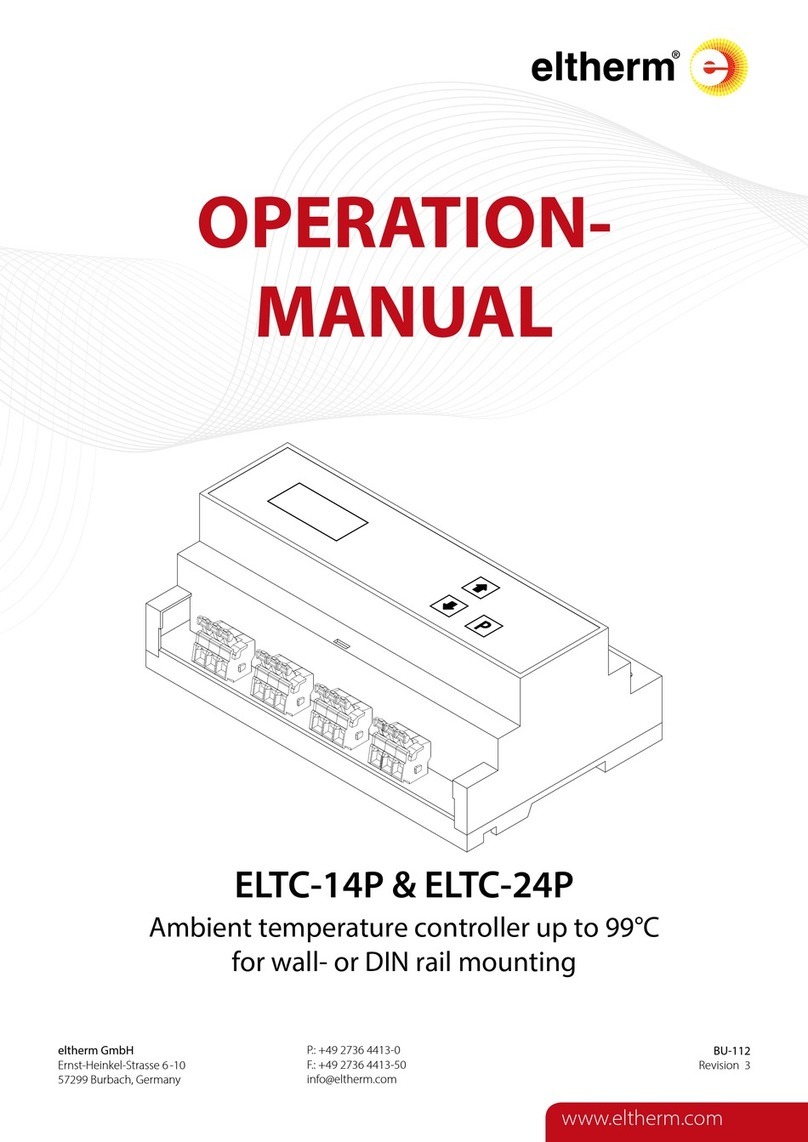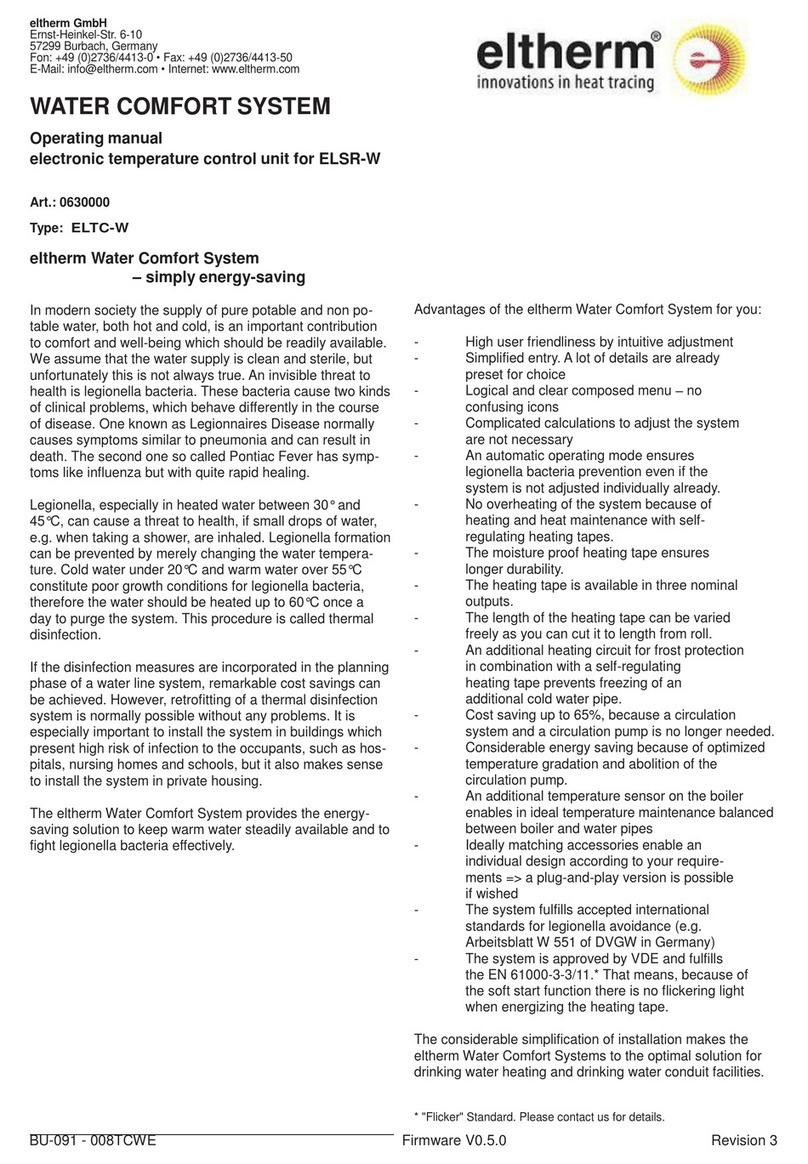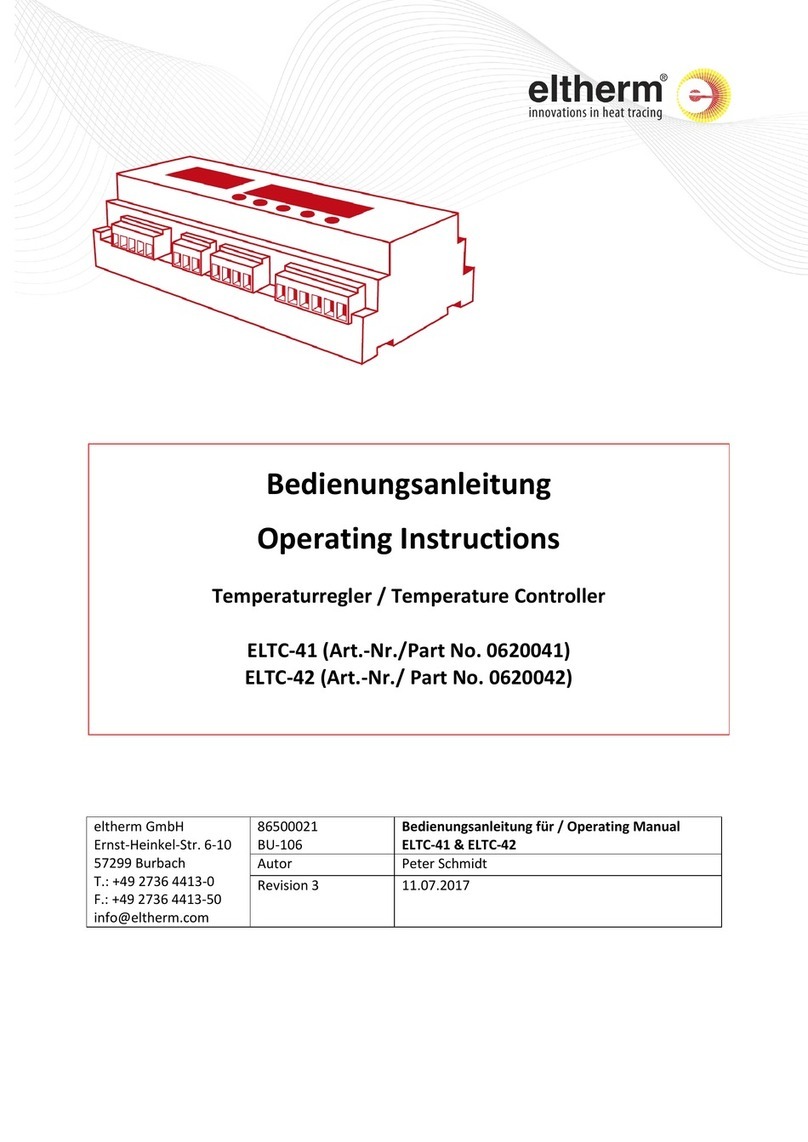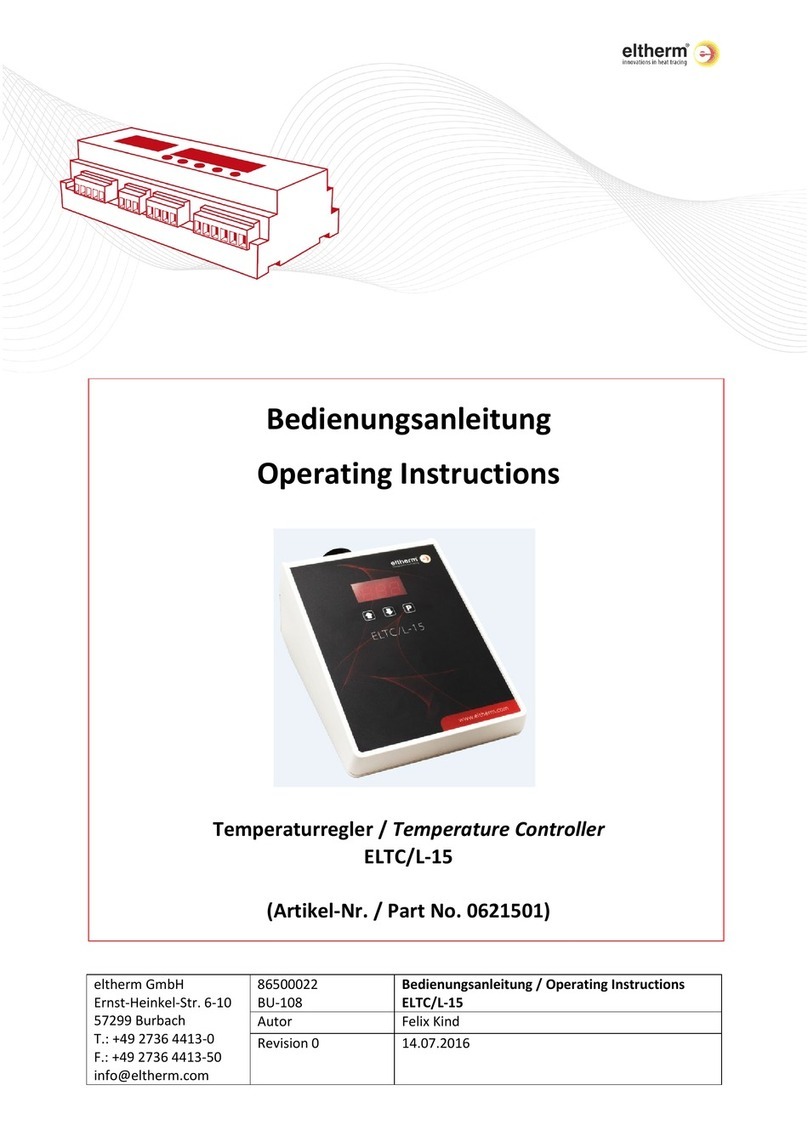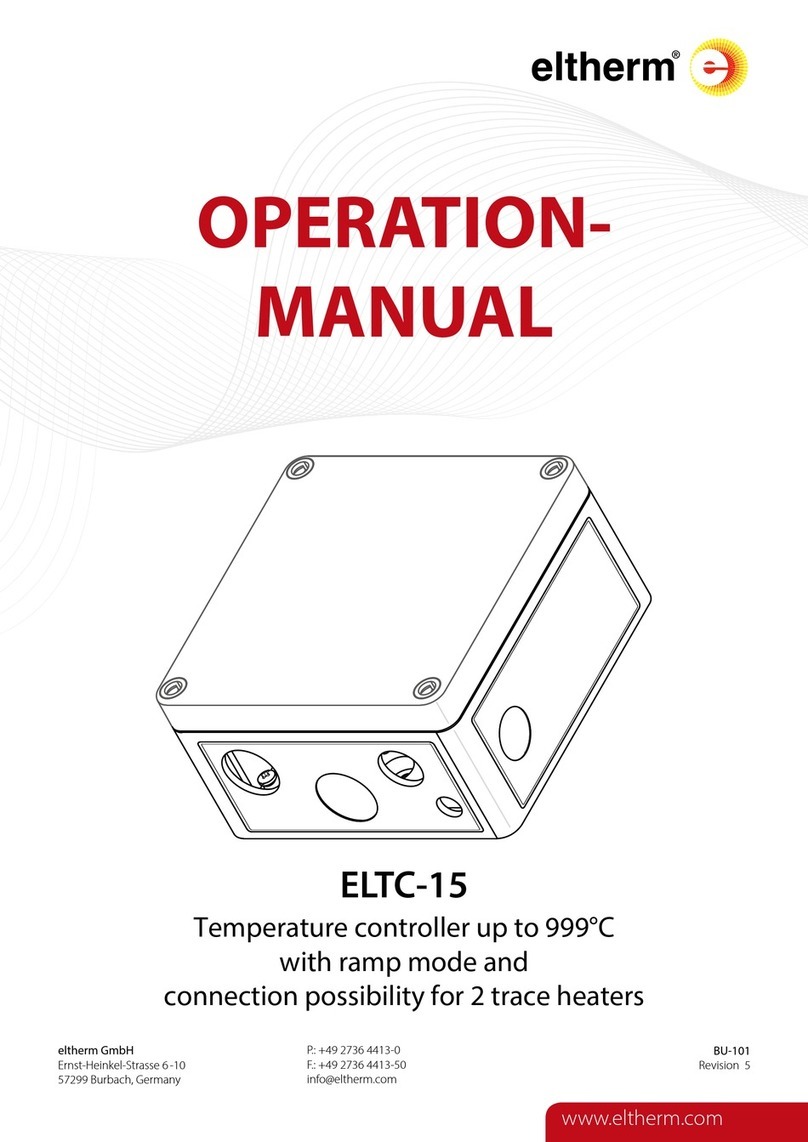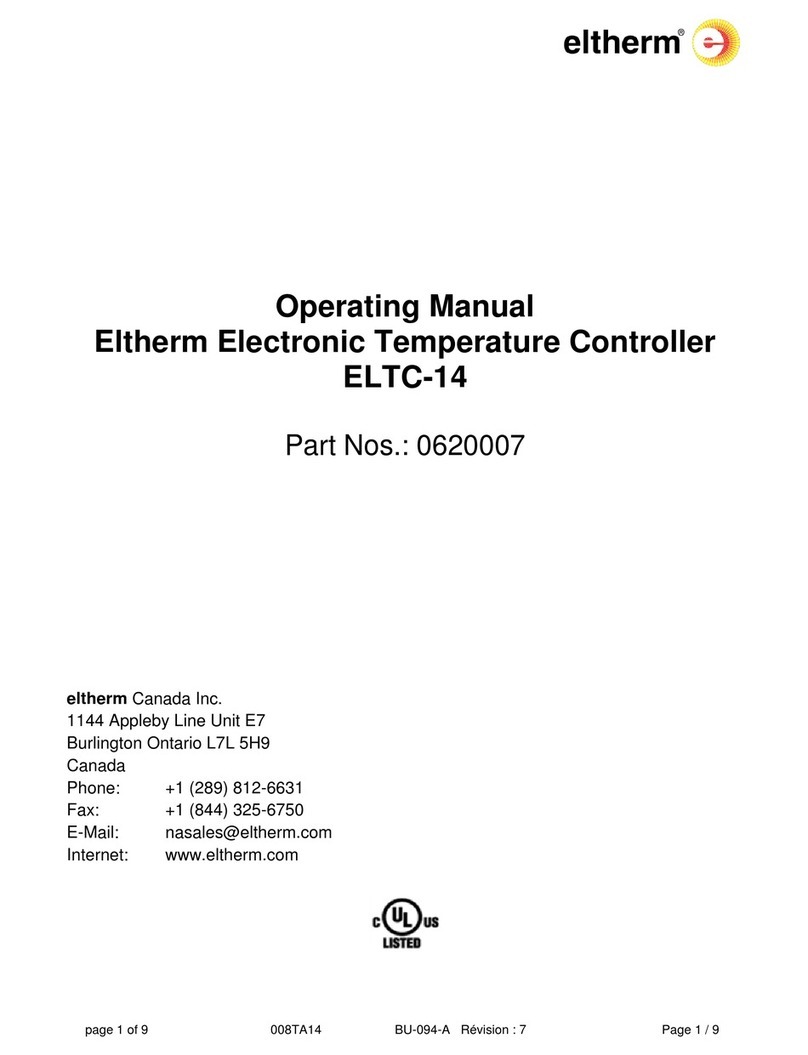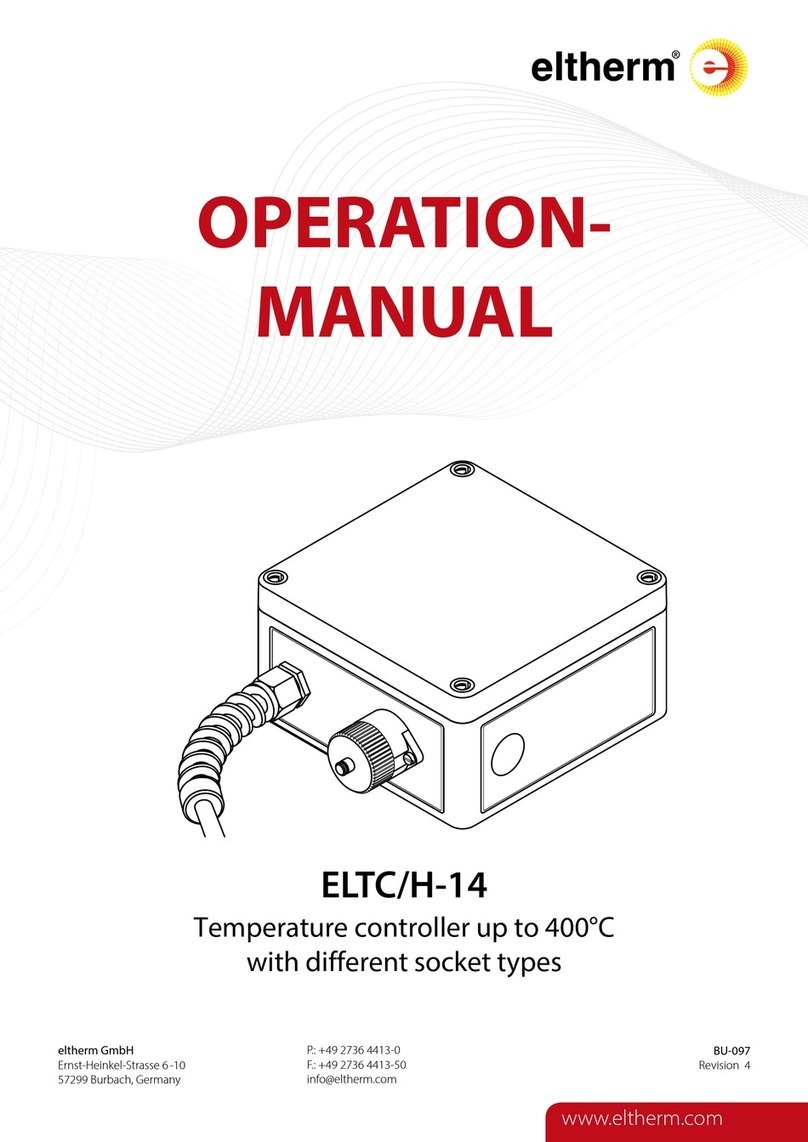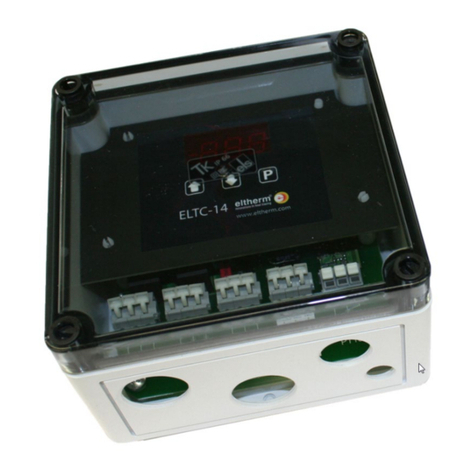
7
www.eltherm.com 7
www.eltherm.com
CAUTION
• Persons involved in installations and testing of elec-
trical trace heating systems should be appropriately
qualied to perform the required actions
• Electrical heat-tracing systems should be installed
under the direction of a qualied electrician who has
completed supplemental training on electrical heat-
tracing systems
• Critical work, such as making connections or termin-
ations, should be performed only by qualied person-
nel
DANGER
Before starting work on heating or connection lines
or terminals, make sure that the corresponding circuit
is switched o and secured against unintentional re-
connection
• Electrical connection / commissioning must be
carried out by a qualied electrician.
• The relevant local safety regulations must be obser-
ved.
CAUTION
CAUTION
The sensor cables must be shielded when extended;
the shielding must be grounded on one side near the
controller. The cable must not be laid parallel to lines
carrying mains voltage. The total line resistance must
not exceed 10 ohms.
The temperature sensors should be completely free of
physical damage.
NOTE
i
The suitability of the system components for the
operating temperatures and environmental conditions
should be checked. Furthermore, it should be checked
whether they are protected as required against corro-
sion and the ingress of moisture and foreign particles.
NOTE
i
SPECIAL CONDITIONS
The temperature sensor should be checked for com-
patibility with the control equipment before starting
installation.
NOTE
i
INSTALLATION
SPECIAL INSTRUCTIONS INSTALLATION
Diameter and length of the temperature sensor can
inuence the temperature measurement
NOTE
i
CAUTION
• Before and during installation, keep the ends of hea-
ting elements and kit parts dry.
• The surface on which the temperature probe is to be
mounted must be free of rust, grease, oil, etc.
• Any sharp imperfections, such as welding beads,
cement splashes, etc. should be removed.
• Make sure that the crimp terminals are the correct size
and are approved for the conductor. Also make sure
that the crimping tool is suitable and in good condi-
tion.
• Make sure the terminals are the correct size and rating
to accept the conductors.
• Ensure that connections and terminations are
arranged in such a way that they are protected from
external damage and the ingress of water or other
contaminants that may adversely aect suitability.
• Avoid damage, tensile stress, kinking and torsion of
the connected cables.
• When routing wires out, make sure they exit the insu-
lation without allowing moisture or foreign objects to
enter.
• When selecting the mounting location, observe the
IP protection class and the permissible operating
temperature.
